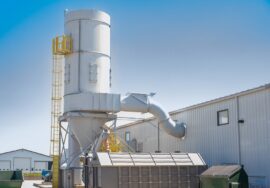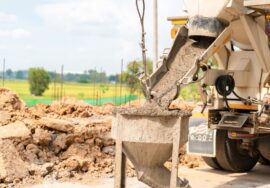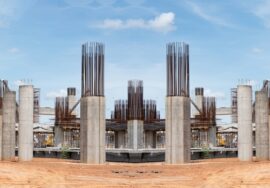
Emission Reduction Strategies in Construction
Emission Reduction Strategies in Construction
The construction industry is one of the largest contributors to global greenhouse gas emissions. From the manufacturing of building materials to heavy machinery operation, every stage of construction adds to the carbon footprint. However, with growing awareness and advancements in technology, implementing emission reduction strategies has become essential for achieving sustainable development.
By adopting effective emission reduction strategies, construction companies can minimize pollution, reduce energy consumption, and support global climate goals — all while maintaining cost efficiency and project quality.
Understanding Emission Reduction in Construction
Emission reduction strategies refer to methods and technologies that help lower greenhouse gas emissions and other pollutants produced during construction activities. These emissions primarily come from fuel combustion in machinery, material transportation, and the production of cement and steel.
The goal of emission reduction strategies is to create cleaner, greener construction processes that minimize environmental harm and contribute to a low-carbon future.
Why Emission Reduction Strategies Matter
Sustainable construction is no longer optional — it’s a necessity for both environmental and economic survival. Here’s why adopting emission reduction strategies is vital:
-
Environmental Protection: Reduces air pollution and slows climate change.
-
Regulatory Compliance: Meets environmental standards set by national and international agencies.
-
Operational Efficiency: Energy-efficient technologies save fuel and cut operating costs.
-
Improved Public Image: Enhances brand reputation through visible sustainability efforts.
-
Healthier Work Environments: Minimizes harmful emissions that affect workers and nearby residents.
Effective emission reduction strategies support long-term sustainability while helping companies remain competitive.
Key Emission Reduction Strategies in Construction
Implementing emission reduction involves a multi-layered approach that combines technology, innovation, and eco-friendly design. Below are some of the most impactful practices used in modern construction:
1. Use of Low-Emission Equipment
Switching to electric, hybrid, or biofuel-powered machinery significantly reduces carbon emissions. Regular maintenance and fuel optimization also play a major role in lowering pollution.
2. Sustainable Building Materials
Choosing green materials such as fly ash concrete, recycled steel, and bamboo helps reduce the embodied carbon in buildings. Locally sourced materials further cut transportation-related emissions.
3. Energy Efficiency Measures
Incorporating energy-efficient designs, lighting, and HVAC systems can reduce operational emissions during a building’s life cycle.
4. Waste Management and Recycling
Proper waste management and construction waste recycling prevent methane emissions from landfill decomposition and promote resource conservation.
5. Renewable Energy Integration
Using solar panels, wind energy, and geothermal systems to power construction sites and completed structures contributes to net-zero energy goals.
6. Smart Building Technology
IoT-based smart building technology enables real-time energy monitoring, helping minimize unnecessary energy use and emissions.
Emission Reduction Strategies: The Indian Context
India’s growing construction sector has immense potential to lead in sustainable innovation. The government and industry organizations are already promoting emission reduction through various policies and initiatives.
For example, the Central Pollution Control Board (CPCB) and the Indian Green Building Council (IGBC) encourage green construction practices and low-emission construction through regulatory guidelines and certification programs.
From adopting prefabricated construction methods to developing net-zero energy buildings, India is steadily moving toward environmentally responsible infrastructure development.

Benefits of Implementing Emission Reduction Strategies
By integrating emission reduction into construction projects, developers can achieve significant environmental, social, and economic benefits:
-
Lower Carbon Footprint: Reduces the overall environmental impact of construction.
-
Enhanced Building Performance: Sustainable designs lead to long-term energy savings.
-
Compliance and Incentives: Qualifies for tax benefits and green certifications like LEED or IGBC.
-
Cost Efficiency: Efficient resource management reduces operational and material costs.
-
Corporate Sustainability: Demonstrates commitment to global climate action and corporate responsibility.
Ultimately, emission reduction strategies drive both environmental stewardship and business growth.
Integrating Emission Reduction Strategies with Smart Design
To achieve maximum impact, emission reduction must be combined with sustainable design elements like passive design, natural ventilation, and sustainable landscaping. When these approaches work together, buildings become not only energy-efficient but also healthier and more resilient.
A comprehensive life cycle assessment ensures that emissions are minimized at every stage — from material production to end-of-life disposal.
Partner with Sustainable Construction Experts
At AMS India, we specialize in delivering eco-conscious projects that integrate advanced emission reduction. Our team combines innovation, engineering expertise, and smart building technology to help clients achieve sustainability goals.
We focus on reducing emissions, improving efficiency, and aligning construction practices with India’s vision for a cleaner, greener future.
Conclusion
Adopting emission reduction in construction is essential to tackling climate change and building a sustainable future. From using renewable energy and green materials to optimizing operations through technology, every step counts.
By investing in sustainable innovations today, the construction industry can lay the foundation for a low-carbon, energy-efficient, and environmentally responsible tomorrow.
Read more related articles to enhance your knowledge and make informed decisions
Cost-Effective Modular Construction: Fast, and Sustainable Building Solutions
Smart Modular Buildings: Innovative, Efficient, and Sustainable Construction








